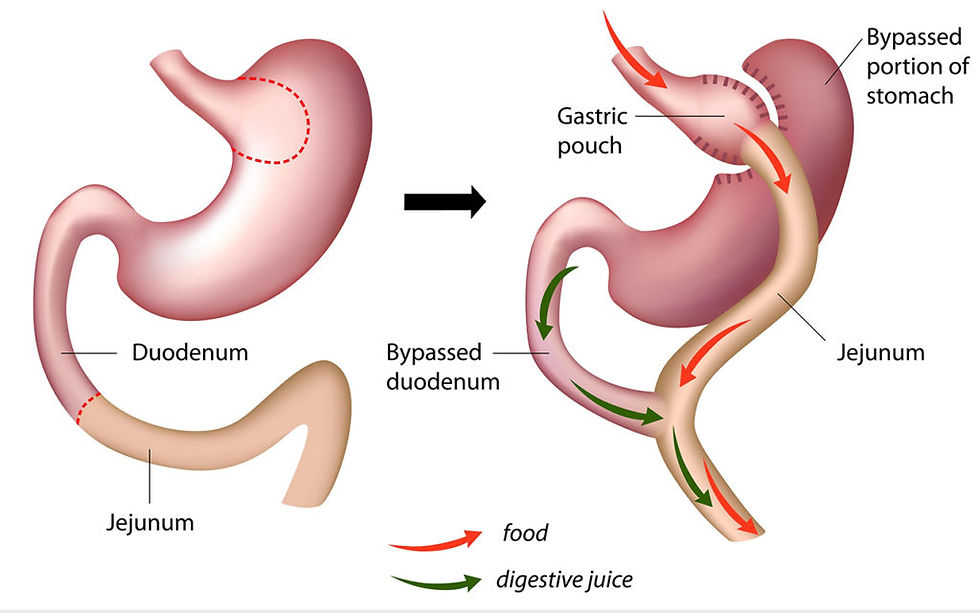İhlas News Agency-Prof.Dr.Abdulkadir Bedirli
- Prof.Dr. Abdulkadir Bedirli

- Dec 21, 2022
- 2 min read
Updated: May 9, 2023
How are these surgeries performed?
Koru Ankara Hospital General Surgery Specialist Prof Dr Abdulkadir Bedirli has said: 'The stomach, whose normal volume is 1.5-2 liters, becomes 150-200 ml after this surgery and this causes a decrease in the patient's food intake.'
Prof Dr Abdulkadir Bedirli, who pointed out that restrictive surgeries cause a decrease in food intake and increase in satiety after meals, while absorptive surgeries have an effect by reducing the absorption of calories, protein and other nutrients, has said: “The two most common surgical procedures today are sleeve gastrectomy and gastric bypass. While sleeve gastrectomy is a restrictive surgery, gastric bypass is both restrictive and absorption-reducing.
Prof Dr Bedirli, who explained the sleeve gastrectomy or colloquially called tube stomach surgery is the removal of the left side of the stomach, has said that:
"The surgery is performed under general anesthesia. After the left side of the stomach is released from the bottom up to the fundus, the stitching and then the cutting process is performed with the help of automatic staplers, which we call staplers. Then, the remaining stomach part of the patient is sutured with a second suture and the procedure is completed. The surgery can be performed both laparoscopically and robotically."
Prof Dr Bedirli, who underlined the mechanism of action of sleeve gastrectomy is primarily dependent on the reduction of stomach volume, that is, its restrictive function, has said that: 'The stomach with a normal volume of 1.5-2 liters becomes 150-200 ml after this surgery and causes a decrease in the patient's food intake. Apart from this, since a hormone called ghrelin, which is called the hunger hormone, is mostly released from the removed part of the stomach called the fundus, the decrease in ghrelin levels causes a decrease in the feeling of hunger in the patient.
Prof Dr Abdulkadir Bedirli has said that gastric bypass surgery is the most frequently performed surgical procedure in the United States, where bariatric surgery is the most intensive. Prof Dr Abdulkadir Bedirli explains that the operation is performed under general anesthesia and starts with small intestine anastomosis, in which the 150 cm small intestine part is disabled for absorption, and then a new pouch with the size of a 30 milliliter egg is created in the stomach. Prof Dr Bedirli has said that: 'The operation is ended with a second anastomosis made between the feeding leg of the small intestine and this new stomach pouch. Gastric bypass surgery can be performed both laparoscopically and robotically. Gastric bypass surgery is both a restrictive and absorption-reducing procedure. The volume of the stomach is reduced and the patient's food intake is reduced.'
Prof Dr Abdulkadir Bedirli concluded as follows:
'As a result of excluding an average of 150 cm of intestine, absorption of total calories, protein and other nutrients in the patient decreases. For this reason, gastric bypass is more successful in terms of long-term results. Gastric bypass surgery is an effective, safe and sustainable procedure and has been defined as a gold standard procedure by the International Federation of the Surgery of Obesity and Metabolic Diseases (IFSO), the American Society for Metabolic and Bariatric Surgery (ASMBS), and the National Institutes of Health (NIH). The majority of the patients consists of patients who go through gastric bypass surgery with robotics and laparoscopic.'

















Comments